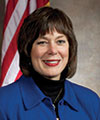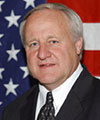If political prognostication is part of your job description, it’s never too early to look ahead and game-board a potential outcome based on certain assumptions. So let’s start this process for 2016 by taking an early look at the Wisconsin Senate. Sixteen members of the 33-member Senate will be up for re-election next year.
Today, Republicans control the state Senate 18-14. After the April 7 special election in the open 20th Senate District, the GOP will control the upper house 19-14 since the 20th District is solidly GOP. The 19-14 GOP majority means Democrats would need a net pickup of three GOP seats to retake the majority in 2016.
The question is, though, if Democrats can identify three truly competitive seats, recruit top-tier candidates to run, and position their candidates to compete in a presidential election cycle that will likely feature Wisconsin as a national “battleground” state.
The answer: maybe, but it’s all uphill at best and extremely unlikely at worst.
The 16 state Senate seats on the ballot in 2016 will be strongly influenced by the top-of-the-ticket race for president and the partisan makeup of the districts holding elections. With that being said, my very early outlook for the Wisconsin Senate elections next year, as well as major factors to watch for, is on page 30.
Wide open presidential election cycle in 2016
Since 1952, there have been seven “open seat” presidential elections: 1952 (Eisenhower), 1960 (Kennedy), 1968 (Nixon), 1976 (Carter), 1988 (Bush 1), 2000 (Bush 2), and 2008 (Obama). Five elections were close (1960, 1968, 1976, 1988 and 2000), and two were not (1952 and 2008). The two cycles that were not close featured unique circumstances that tilted the election in one direction: these included Eisenhower’s election and the Korean War in 1952, and Obama’s election and the financial crisis in 2008.
It’s far more likely in 2016 for the presidential race to be highly contested and close in Wisconsin. Assuming that’s the case, Wisconsin Senate elections will likely reflect this competitive landscape and give incumbents on both sides running for re-election the natural advantage of the partisan makeup of their districts.
Partisan makeup of the 16 Senate districts
In 2016, eight Democrats and eight Republicans will be up for re-election. As noted, the partisan makeup of their districts will greatly influence the election outcome. A quick look at the numbers suggests that virtually all 16 incumbents are in a good position to be re-elected, assuming they run and don’t lose in a primary.
Of the eight Democrat-held seats on the ballot, the high end “average Democrat performance” is 83 percent, with the low end at 49.4 percent. On the GOP side, the high end “average Republican performance” is 68.1 percent, with the low end at 52.7 percent. With only Sen. Hansen in Green Bay as the one notable exception, all incumbents hold seats that should, under normal and competitive circumstances, be controlled by their party after the November 2016 elections. This assumes competently run campaigns free of scandals or mistakes.
Ron Johnson re-election race
Another factor that may influence state Senate elections is U.S. Sen. Ron Johnson’s race. I should emphasize “may” because U.S. Senate races in Wisconsin generally track with the presidential election. The party that carries the presidential race in Wisconsin in 2016, as history shows, is almost certain to win the U.S. Senate race, and Democrats have carried Wisconsin in every presidential election since 1988. Sen. Johnson’s fate will be very closely tied to the presidential election and may have little to no impact on state Senate elections.
Scott Walker wild card
The “Walker factor” is difficult to gauge at this point. Whether Gov. Walker will maintain the competitive posture he currently enjoys in the presidential race remains to be seen. If he does and finds himself on the national ticket, his presence on the ballot could drive partisan turnout even higher than normal. That may generate straight-ticket voting going down the ballot and give incumbents a stronger advantage. Wisconsin is a highly polarized state, and for those who represent a Democrat or Republican district, the Walker influence could easily drive the partisan advantage the incumbent’s way.
At this point, it’s very difficult to outline a realistic scenario where Democrats can retake the state Senate in 2016. There are, however, four seats that will almost certainly be targeted by both sides even if it remains unlikely that Democrats have a realistic shot at regaining a majority next year.
 Sheila Harsdorf (R) — Senate District 10
Sheila Harsdorf (R) — Senate District 10
- McCain 2008: 49%
- Walker 2010: 59%
- Romney 2012: 52.2%
- Partisan Average: 52.7%
- District Classification: Lean GOP
 Julia Lassa (D) — Senate District 24
Julia Lassa (D) — Senate District 24
- McCain 2008: 41%
- Walker 2010: 53%
- Romney 2012: 46.8%
- Partisan Average: 52.8%
- District Classification: Lean Dem
 Tom Tiffany (R) — Senate District 12
Tom Tiffany (R) — Senate District 12
- McCain 2008: 48%
- Walker 2010: 59%
- Romney 2012: 53%
- Partisan Average: 53.7%
- District Classification: Lean GOP
 Dave Hansen (D) — Senate District 30
Dave Hansen (D) — Senate District 30
- McCain 2008: 43%
- Walker 2010: 55%
- Romney 2012: 47.1%
- Partisan Average: 50.6% GOP
- District Classification: Swing
The election cycle outlook is important for policy reasons. When the WRA board of directors and staff develop the WRA public policy agenda, we must look forward to and anticipate which issues are most important and likely to succeed or fail since elections have consequences. The WRA stays ahead of the curve.
Joe Murray is Director of Political and Governmental Affairs for the WRA.